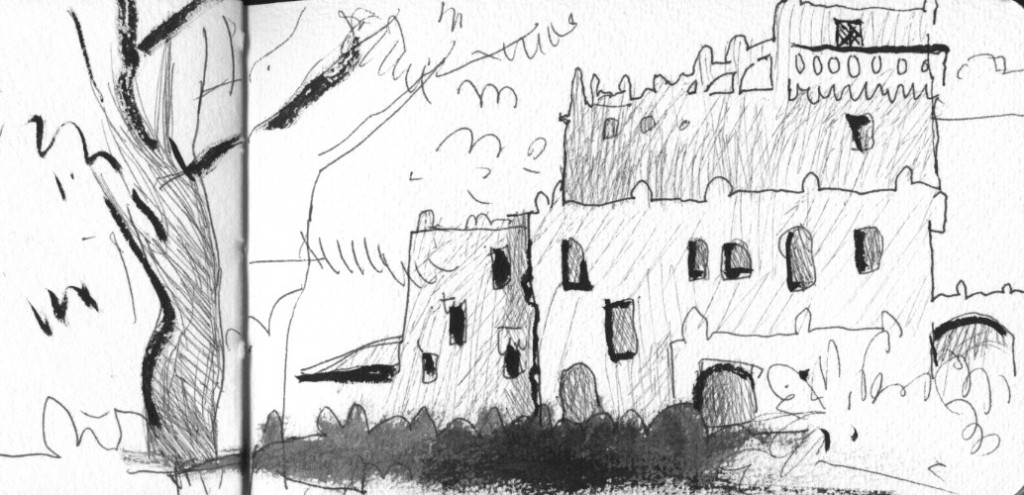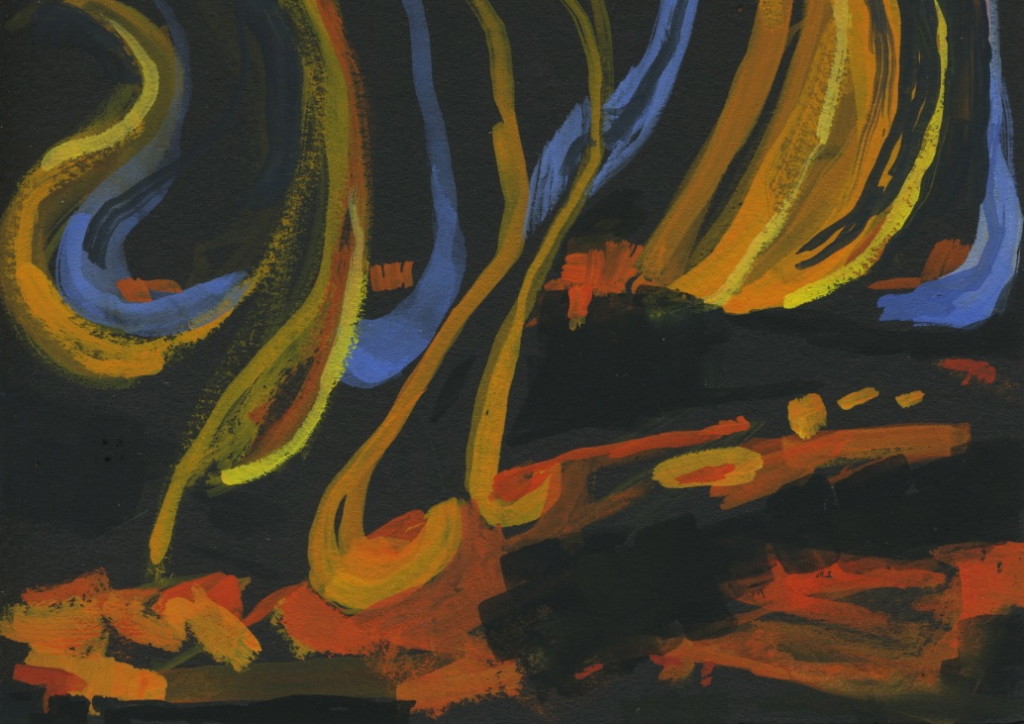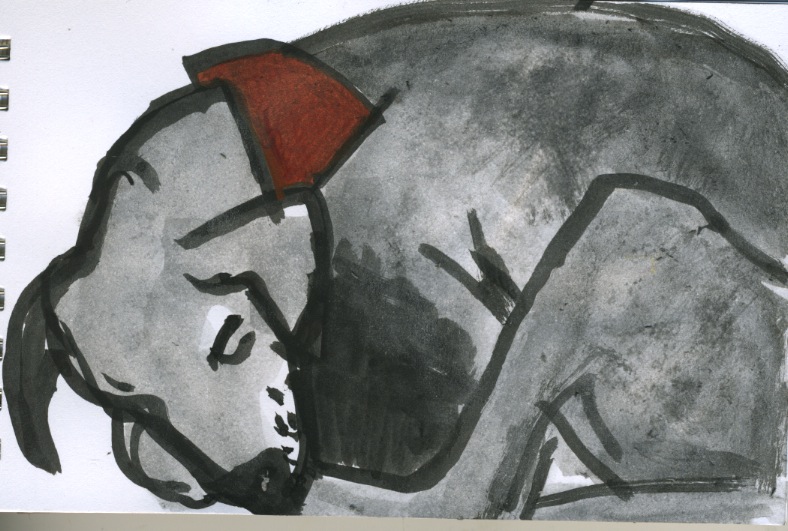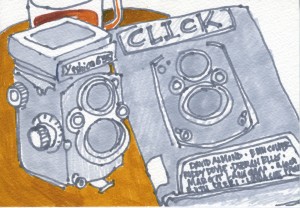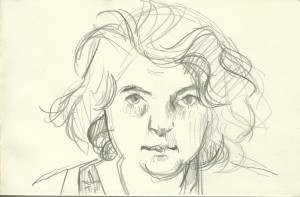We’ve reached the halfway mark of THE GREAT CONNECTICUT CAPER! So much has happened since that opening chapter on the Connecticut River when we first learned Gillette Castle had gone missing. Check out chapter 6 and then read about the making of as author Melissa Crandall graciously answers some questions about the making of it and her writing life. Welcome, Melissa!
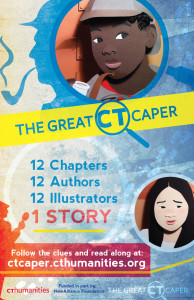 What was your approach to writing chapter 6 of the Great CT Caper? Did it differ any from your approach when creating a piece written solely by you?
What was your approach to writing chapter 6 of the Great CT Caper? Did it differ any from your approach when creating a piece written solely by you?
The big difference, of course, was that there were five other writers ahead of me, so my preparation involved reading those five chapters, seeing how they meshed together, and then working to make my chapter fit as another piece to the puzzle. I’ve had a lot of experience doing that sort of thing – I’ve been writing collaborative pieces since high school – so I was familiar with the drill. Whether I’m working solo or in collaboration, my chief goal is to write the very best I can.
What were your expectations coming into writing a collaborative, serialized story for young readers? Had you written anything like this before?
Oh, yes. Back in high school, my friends and I wrote serialized stories where one of us would start, write the plot into a corner, and then gleefully pass it on to the next person to figure out. My first professional novel – Star Trek’s ICE TRAP – was written in collaboration with two other writers under the name L.A. Graf, and for the past several years I’ve participated in The Exquisite Project at Bill Library in Ledyard, CT. In essence, that’s a writer/artist version of the old “Exquisite Corpse” parlor game.
The Great CT Caper’s target audience is children in grades four through seven. What were some of your favorite books when you were that age?
I was (and still am) a voracious reader, so there were many. Some that readily come to mind are: Peter Pan (J.M. Barrie), Misty of Chincoteague and King of the Wind (Marguerite Henry), Black and Blue Magic (Zilpha Keatley Snyder), Andy Buckram’s Tin Men (Carol Ryrie Brink), Steel Magic (Andre Norton), and the Moomintroll books (Tove Jansson).
What writers do you find inspire your own work?
Truthfully, every writer I read affects me in some way. Some teach me ways to be a better writer, and others show me things I don’t ever want to emulate. Some of those who energize me about the craft of writing are J.M. Barrie, Stephen King, Ray Bradbury, Barbara Hambly, and Jonathan Carroll.
If you were stranded on a desert island and could only bring two books and one movie, what would you bring?
The books would be Peter Pan by J.M. Barrie and A Christmas Carol by Charles Dickens. (And if I could sneak in one more, it would be “Red Ranger Came Calling” by Berke Breathed.) As for movies…that’s hard, because my favorite changes all the time depending upon my mood. Probably JAWS.
Everyone is always trying to sneak in an extra one on that desert island! Where else can readers find your writings? What’s up next for your writing career?
Most of my books are currently out of print, but can be found wherever used books are sold. In the past year, my short story “Centaur” appeared in the online magazine Allegory, and I also sold essays to CHICKEN SOUP FOR THE SOUL: THE POWER OF FORGIVENESS and the Journal of the American Geriatric Society. They can also check out my website at www.melissacrandall.com and my blog “The Wild Ride – Caretaking Mom Through Alzheimer’s” at https://melissacrandall.wordpress.com/.
Currently, I’m working on a fantasy story and doing research for what I hope will turn into a novel based during the American Civil War.
And finally, what is something funny/weird/exceptional about yourself that you don’t normally share with others in an interview?
I once baby-sat a convalescing elephant.
Melissa Crandall writes “whatever needs writing.” To date, that’s included science fiction novels, fantasy short stories, and non-fiction essays. For several years, she served as fiction judge for the Darien Library Teen Writing Contest. Crandall enjoys hiking with her dog and pursues nature photography as a hobby.
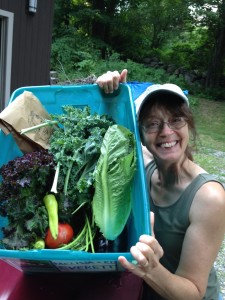
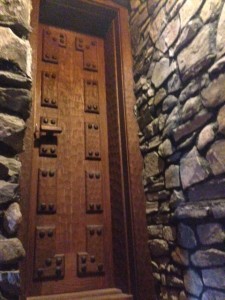
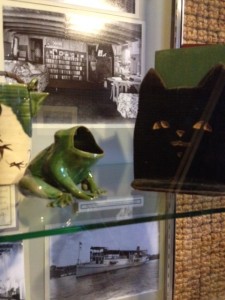
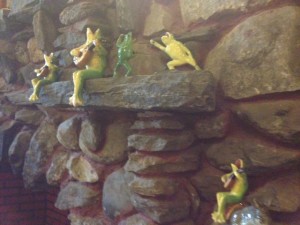 But here’s the problem with only using online research: it’s not always correct. My original draft of chapter five involved excitement when a dinosaur statue in the field at Dinosaur State Park came to life and started chasing Thomas and Norm. But I was unsure of two things: 1) it’s been a long time since my son, now 21, was obsessed with dinosaurs and I knew every single dinosaur ever, so I wanted to check I was using the correct name and 2) I was worried because there is also a Dinosaur State Park in Texas and some of the same pictures that were tagged as being in CT were also tagged as being in Texas.
But here’s the problem with only using online research: it’s not always correct. My original draft of chapter five involved excitement when a dinosaur statue in the field at Dinosaur State Park came to life and started chasing Thomas and Norm. But I was unsure of two things: 1) it’s been a long time since my son, now 21, was obsessed with dinosaurs and I knew every single dinosaur ever, so I wanted to check I was using the correct name and 2) I was worried because there is also a Dinosaur State Park in Texas and some of the same pictures that were tagged as being in CT were also tagged as being in Texas.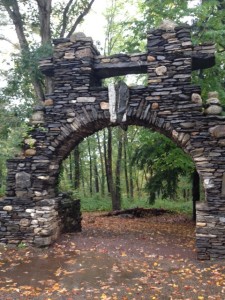 This is where being a journalist and understanding the importance of fact-checking helps me as a writer. I emailed Dinosaur State Park and explained my dilemma. I received an incredibly helpful email back from Meg Enkler, the Environmental Education Coordinator at Dinosaur State Park. Meg confirmed that the outside dinosaur statues must be at the Texas park, because the big statue of a Dilophosaurus, is indoors at Rocky Park. That nixed my existing plot line, but Meg helpfully suggested several alternatives, one of which I used. Thank you, Meg!
This is where being a journalist and understanding the importance of fact-checking helps me as a writer. I emailed Dinosaur State Park and explained my dilemma. I received an incredibly helpful email back from Meg Enkler, the Environmental Education Coordinator at Dinosaur State Park. Meg confirmed that the outside dinosaur statues must be at the Texas park, because the big statue of a Dilophosaurus, is indoors at Rocky Park. That nixed my existing plot line, but Meg helpfully suggested several alternatives, one of which I used. Thank you, Meg!
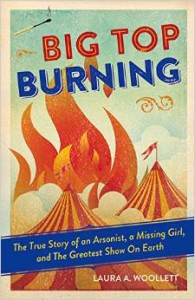 My first book,
My first book,  many carved wooden doors, each one unique. Fiction feels its most real when the sensory details are just right. Since our story would take place at this real location, it felt important for me to experience what Li-Ming and Thomas would first hand.
many carved wooden doors, each one unique. Fiction feels its most real when the sensory details are just right. Since our story would take place at this real location, it felt important for me to experience what Li-Ming and Thomas would first hand.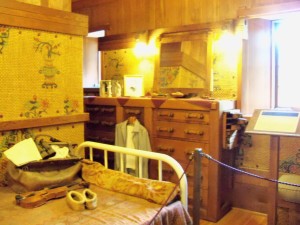 the plot. If the detail was not important to the scene, I cut it, even if it were true. Somewhere in Chapter 4, I took a bit of artistic license. Can you tell where?
the plot. If the detail was not important to the scene, I cut it, even if it were true. Somewhere in Chapter 4, I took a bit of artistic license. Can you tell where?
